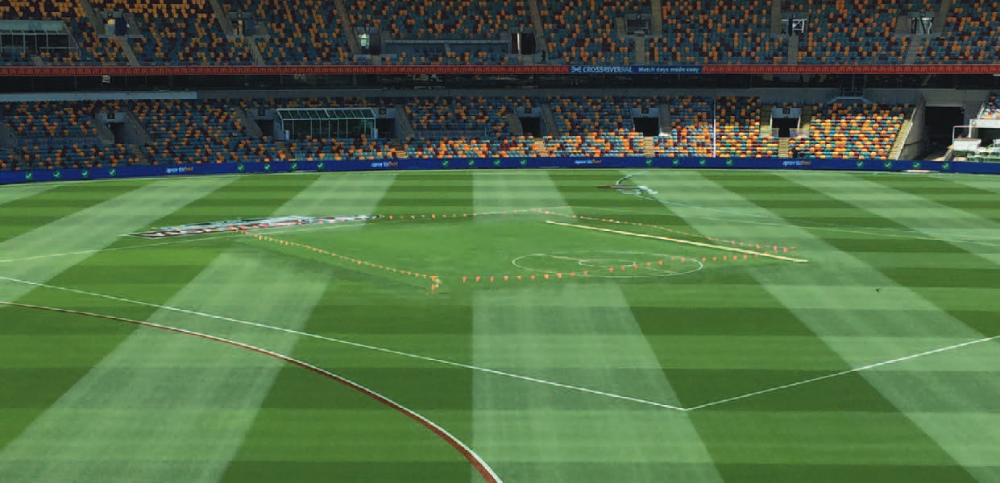Autumn Fertility of Warm Season Turfgrasses
For Australian Turf Managers few other times of the year are more crucial than the last few weeks of autumn. Having survived the dry heat of summer and the humidity of early autumn, many turf surfaces will often be in their worst shape at this time of year. There is only a limited window of time available to strengthen the turfgrass plant prior to the onset of winter, making these precious few weeks vital in the success of the following season. During this time both warm and cool season turfgrasses will be in a phase of physiological transition as soil temperatures drop (McCarty 2002), though it is the warm season (C4) turfgrasses that will typically face the more significant reduction growth. In many parts of Australia full winter dormancy is generally not observed in warm season species such as couch grasses (Cynodon spp.), though while it may not be visually observed the growth of the plant will still slow significantly.

Timing Pre-Dormancy Nutrition
Logic may suggest that heavy applications of nitrogen in early spring will effectively boost spring growth and result in a vigorous start to the growing season; however research has consistently shown that prematurely stimulating foliar growth through excessive nitrogen applications in early spring can result in turf injury. This is known as low temperature injury and occurs when cool nights persist into spring following the break of dormancy (Beard 1973). Premature applications of nitrogen result in increased cell size and decreased cell wall thickness.
This makes the plant tissue prone to injury resulting from environmental extremes such as frost, when plump, soft plant cells can be easily damaged (Beard 1973). Achieving rapid and healthy spring green up following the break of dormancy relies instead on well balanced and accurately timed fertiliser applications in late autumn. Through focusing on autumn nutrition the turf manager can ensure the plant is in optimum health prior to entering dormancy.
Handreck and Black (2010) recommend that the final application of pre-dormancy nutrition be applied no later than 30 days prior to the onset of the first frost. While this is a difficult date to determine accurately in many parts of the country, a guess based on previous years’ frost timings should suffice. Throughout most of Southern Australia this will probably be around April or May. In situations where turf is to be over-sown with cool season varieties, the fertiliser application should be no less than 30 days from seeding (Handreck & Black 2010).
Balancing Pre-Dormancy Nutrition
Research has consistently shown that rapid, healthy break of dormancy in spring is best achieved through applications of well-balanced fertilisers in late autumn. Fertilisers with a nitrogen to potassium ratio of 1:2 have been shown to offer the best results during autumn applications (Handreck & Black 2010). The 1:2 ratio is the ideal balance to extract the most benefit from both the nitrogen and the potassium components of the fertiliser, by promoting the ideal growth and development characteristics that are desirable for the winter months.
The high potassium component assists in several areas that are highly important for winter hardiness. Potassium plays a vital role in strengthening the overall physiology of the plant, through strengthening cell walls, increasing turgor pressure (internal cell pressure) and by moderating the moisture content of the cells. This results in a plant that can withstand frost and surface traffic whilst recovery and growth are stalled in dormancy.
According to Beard (1973) higher potassium levels have also been shown to reduce the incidence of several key winter diseases such as winter fusarium (Fusarium spp.), helminthosporium complex (Bipolaris spp. & Drechslera spp.) and brown patch (Rhizoctonia spp.)
The moderate nitrogen content of the 1:2 fertiliser is the ideal amount of nitrogen to stimulate a restrained level of growth, while still feeding the internal plant processes such as carbohydrate production. This moderate approach to nitrogen fertilisation allows turf managers to avoid the undesirable effects often associated with excessive nitrogen applications. Nitrogen greatly influences the growth of both the foliage and roots of the turfgrass plant. Though as the level of nitrogen increases, root growth becomes compromised as the plant prioritises foliar growth over root growth. When this occurs a lack of available carbohydrate reserves can result in the decline and death of the root system. In addition, excessive nitrogen applications have been shown to influence the development of several key winter diseases (Beard 1973), such as winter fusarium (Fusarium spp.), helminthosporium complex (Bipolaris spp. & Drechslera spp.) and brown patch (Rhizoctonia spp.)
Selecting an Appropriate Product
Ideally the 1:2 ratio fertiliser to be applied should contain nitrogen in a soluble form like urea. This will ensure the nitrogen is utilised by the plant at the time of application as intended, thought a fertiliser with a small portion of controlled release nitrogen will also be adequate. As most traditional turfgrass fertilisers possess N:K ratios that are either balanced or high in nitrogen, it is important to look carefully at the product analysis when selecting, to ensure the ratio is at least 1:2. Nuturf Australia offer a range of granular, liquid and soluble fertilisers that match this N:K ratio.
References
Handreck K, Black N, 2010, Growing Media for Ornamental Plants and Turf (Fourth Edition), University of NSW Press Limited, Sydney, NSW.
McCarty LB, Miller G, 2002, Managing Bermudagrass Turf, Sleeping Bear Press, Chelsea, MI.
Beard JB, 1973, Turfgrass: Science and Culture, Prentice Hall Publishing Incorporated, Englewood Cliffs, NJ.








